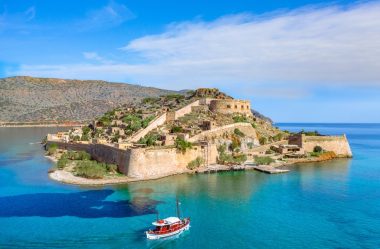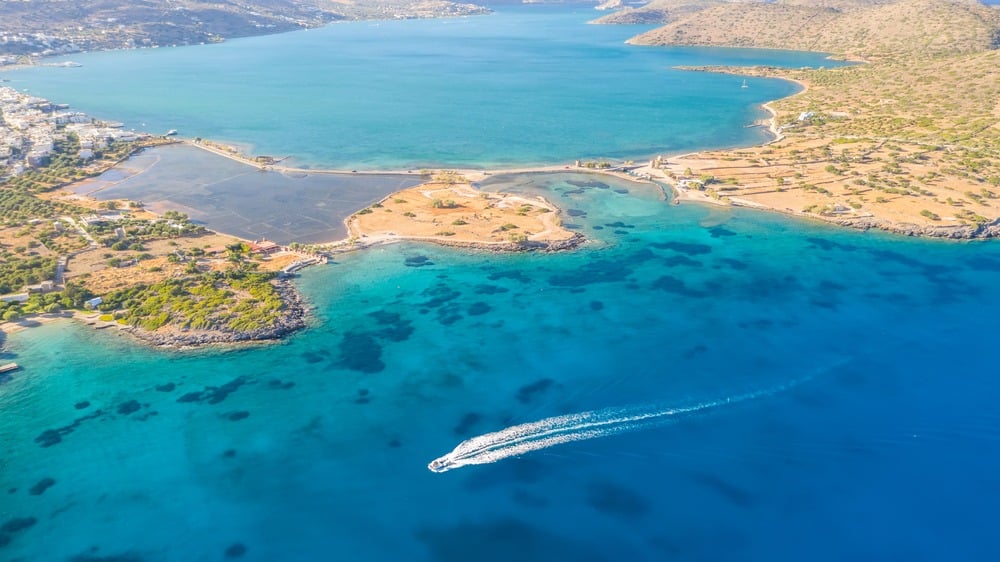The district of Elounda is characterized by a rich tradition and a magical landscape that appeals to particularly demanding visitors. The convenient location in the northeast of Crete also allows easy access to other attractions and venues.
Elounda: A place with a historical tradition
Elounda includes the Schism port region and six other settlements. In addition, the uninhabited islands of Kolokytha and Spinalonga belong to the city. Although most of the buildings in the town date back to the 20th century and the long history is not obvious at first glance, the history of Elounda dates back to the 1st millennium BC when it was founded as Olous. At that time it was a comparatively small, but nevertheless very important port city on Crete. In the 4th century AD, however, it disappeared due to land subsidence in the sea. A few remains can still be discovered there today.
The region captivates with its extensive, rugged coasts, characterized by long beaches and crystal clear sea. In contrast to other places in Crete, there is a quieter and more dignified atmosphere here. Elounda is clearly aimed at a more discerning audience, as can be seen from the magnificent holiday villas, where many celebrities and Hollywood stars have been spotted.
Some of the most beautiful beaches of Crete
The main beach is Elounda Beach, which is only a few meters away from the town center. Day visitors in particular spend their time here, who relax in the beach furniture, let their children play on the large playground and appreciate the shallow entrance into the very cooling water. If you want to buy a souvenir in between, you will find numerous shops, but also cafés and taverns directly on the beach. A lifeguard tower that is always manned ensures good safety.
If you like it even quieter and want to explore the sunken city of Olous, you will find Hiona beach a few minutes’ walk away. Also equipped with plenty of beach furniture and a lifeguard, the beach is a little insider tip, where the streams of visitors are not so strong. Kolakitha Beach is another tip, but word has already spread far and wide, so that there is only really peace and quiet at off-peak times. Plaka Beach and many other beaches are also in the region and are worth recommending.
Original Mediterranean flair

Although tourism is a central source of income for Elounda and its inhabitants, a true Greek atmosphere still prevails in the region. Many small fishing boats in all kinds of bright colors lie on the jetties, which regularly catch fish and other sea creatures with their nets off the beaches. These are then consumed in the region, often in the almost 100 restaurants, taverns and bars in Elounda. There are also other typical Cretan dishes such as souvlaki, hummus, halloumi, stifado and luntza. If you want, you can also find restaurants with other orientations.
The Mediterranean flora and fauna can also be found everywhere. The region is dotted with olive and almond trees, and hilly terrain stretches out behind the village. This can often be combined with an excursion, for example on a hiking tour to ancient Naxos. The wildlife on land with hedgehogs, bats or hares is nothing out of the ordinary, but the water world still has a lot to offer. Among them, in addition to octopuses, turtles and starfish, there are also dolphins, which can be observed from the beach or which can be visited with a boat tour.
Sights & Activities

Elounda offers numerous providers for different tours. Particularly popular are the boat tours, which can lead past the beaches or for exploration tours to the many small islands. A snorkeling tour through the remains of the ancient city of Olous and a diving trip in the very clear waters should also not be missed by any tourist. Tours are also possible by car or the “Happy Train”. If you prefer to explore the area on your own, you can book many offers without a guide.
One of the darker epochs of recent Cretan history is the island of Spinalonga. From 1904 to 1962, lepers were forcibly accommodated there. The separation was considered necessary to protect the health of the population. Despite this restriction, the Cretan and later Greek state did not take sufficient care of the inhabitants, who had to live in poor conditions in old buildings. These buildings, as well as an even older fortress, are partly preserved to this day and can be visited. If you go a little further afield, you will find numerous other interesting places – from small, lonely churches to spectacular natural spectacles and well-known tourist magnets.


